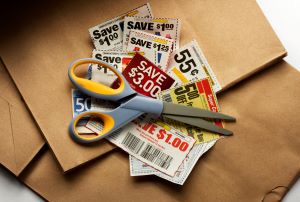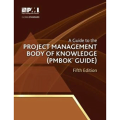
Us humans are predisposed to want free stuff.
In the universe of project management, where budgets are tight and timelines are tighter, there exists an underutilized resource that can significantly boost productivity, morale, and project outcomes: humanity’s undying love for free stuff.
Yes, you heard that right. The same principle that makes us dive into the depths of a bargain bin at a garage sale can be harnessed to steer your project towards success. But before we dive into the “how-to,” let’s understand the “why.”
The Psychology of Free
Of course, there is an underlying cost to everything. But humans are wired to perceive anything provided for free as inherently valuable, even if its actual worth is small. When people receive something for free, it often triggers a sense of joy and surprise, providing a psychological reward. The happiness derived from these freebies is not merely economic; it’s also emotional, offering a sense of luck, generosity, and sometimes, community.
But this isn’t just about the material gain; it’s also the feeling of getting a good deal or beating the system in some small way. Free items can range from samples at a grocery store, to digital downloads, to giveaways on social media. This pursuit of free items can enhance social bonds when shared among friends or family, fostering a sense of generosity and mutual benefit.
Here are 9 ways you can tap into the psychology of free to maximize value on your projects.
1. Free Resources for Team Motivation
 Free Learning Opportunities: Offer free online courses or certifications related to your project. They offer immense value to your team, enhancing their skills, which in turn benefits the project.
Free Learning Opportunities: Offer free online courses or certifications related to your project. They offer immense value to your team, enhancing their skills, which in turn benefits the project.
- Example: Sponsor a month of LinkedIn Learning or Coursera for your team. This not only motivates them but aligns their personal growth with project goals.
- Example: Introduce “Innovation Fridays,” where the last Friday of each month is for personal projects or skill development. This not only boosts morale but might lead to innovative solutions for your project.
2. Free Tools and Software
In the digital age, there’s an abundance of free tools that can make project management smoother:
- Trello, Asana, or Monday.com for task management. These tools have free tiers that are robust enough for most projects.
- Google Suite for collaboration. Free for basic usage, it’s an excellent way to keep communication lines open without additional costs.
Try introducing these tools as “gifts” to your team, thereby enhancing their work environment while keeping costs low.
3. The Power of Free Swag
Never underestimate the motivational power of branded merchandise.
- Example: Customized USB drives, notebooks, or even coffee mugs with the project logo or catchy phrases. These items, while inexpensive, can foster a sense of belonging and team spirit.
4. In-scope Freebies
 Project managers are trained to equate a scope of work with a monetary value. But what if you added 10% to the price, subtracted 10% from the scope, and then the re-offered that scope for free? It’s purely a cosmetic trick.
Project managers are trained to equate a scope of work with a monetary value. But what if you added 10% to the price, subtracted 10% from the scope, and then the re-offered that scope for free? It’s purely a cosmetic trick.
- Example: The building and parking lot will be built as per the plans but the price is for the building only; The parking lot is being built for free.
- Example: The software will include features A, B, and C, but the price is for A and B only; Feature C is being developed for free.
5. Out-of-Scope Freebies
Along the same lines, what if you added 10% to the price and offered to perform out-of-scope work for free that might be required or envisioned outside of the project?
- Example: The building and parking lot will be built as per the plans, but we will add the landscaping for free.
- Example: The software will include features A, B, and C, but we will throw in feature D for free.
6. Free Publicity
Use the allure of free to gain visibility:
- Host a Free Webinar or Workshop: Make sure it’s related to your project’s field. This not only positions your team as experts but also attracts potential stakeholders or clients.
- Free Trials or Demos: If your project involves a product, offer free trials. It’s a classic strategy but works because people will check out anything that’s free, potentially leading to feedback and improvements or even early adopters.
7. Gamification – The Ultimate Free Motivator
Turn tasks into games where participants can win… you guessed it, free stuff:
- Points for Tasks: Convert project milestones into points that can be redeemed for small rewards like extra coffee breaks, movie tickets, or even just public recognition.
- Hackathons or Innovation Days: Where teams compete to solve project-related challenges, with “free” time off or small prizes as rewards.
8. Feedback and Satisfaction
Free Feedback: Encourage a culture where feedback is seen as a gift.
- Example: Implement a system where giving constructive feedback earns you tokens or points towards company swag or events. This not only improves the project but builds a culture of continuous improvement.
9. Leveraging Free for Networking
- Community Engagement: Offer your expertise for free in community projects or forums. This can increase your project’s visibility and attract talent or partnerships.
Conclusion
The art of using ‘free’ in project management isn’t just about slashing costs; it’s about enhancing value perception, boosting morale, and fostering innovation.
By tapping into this universal human trait, project managers can not only make their projects more engaging and efficient but also turn the mundane into the magnificent. Remember, in the grand bazaar of project management, everyone loves a good deal, especially when it’s free. So, next time you’re planning your project strategy, think like a savvy shopper in the market of motivation – because in the economy of human desires, sometimes the best things in life are, indeed, free.













Leave a Reply